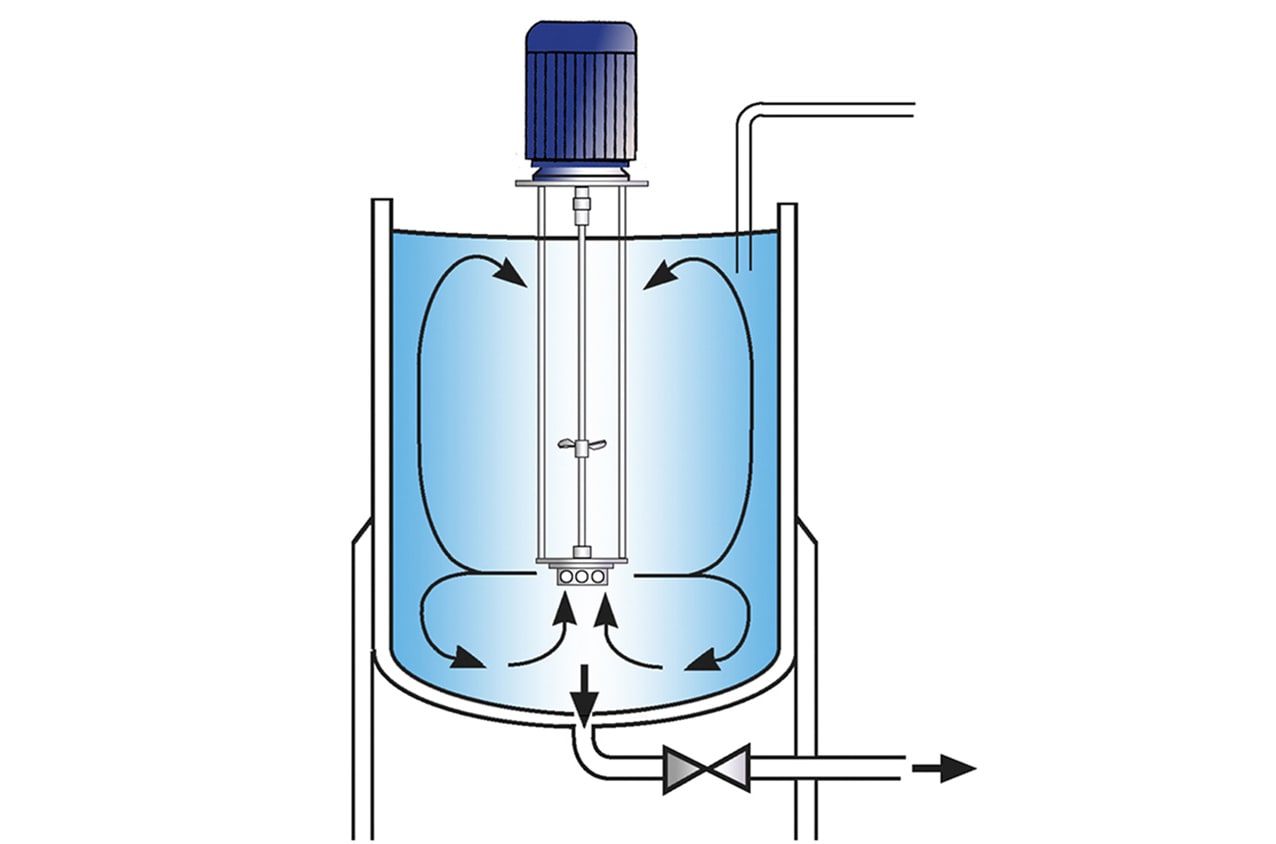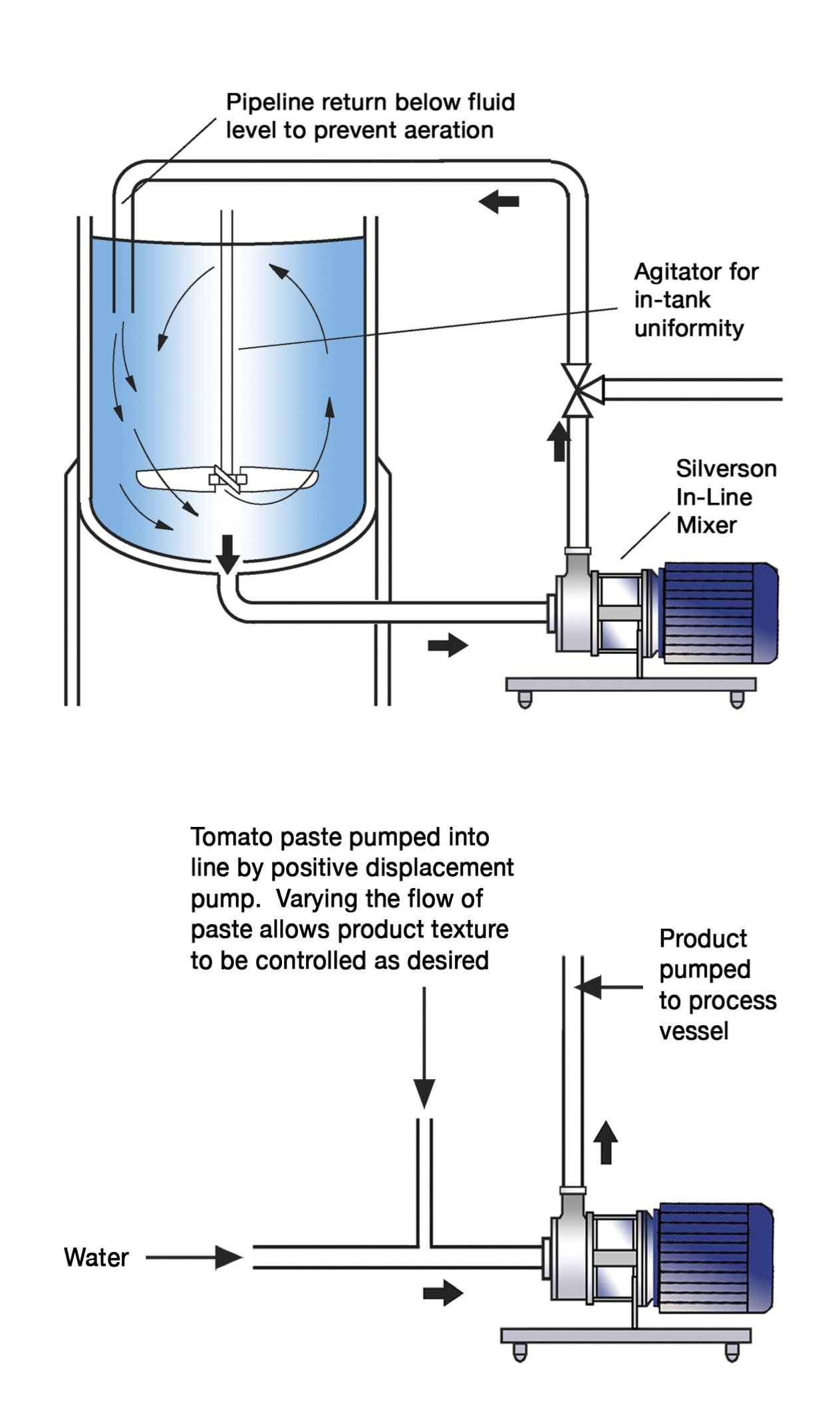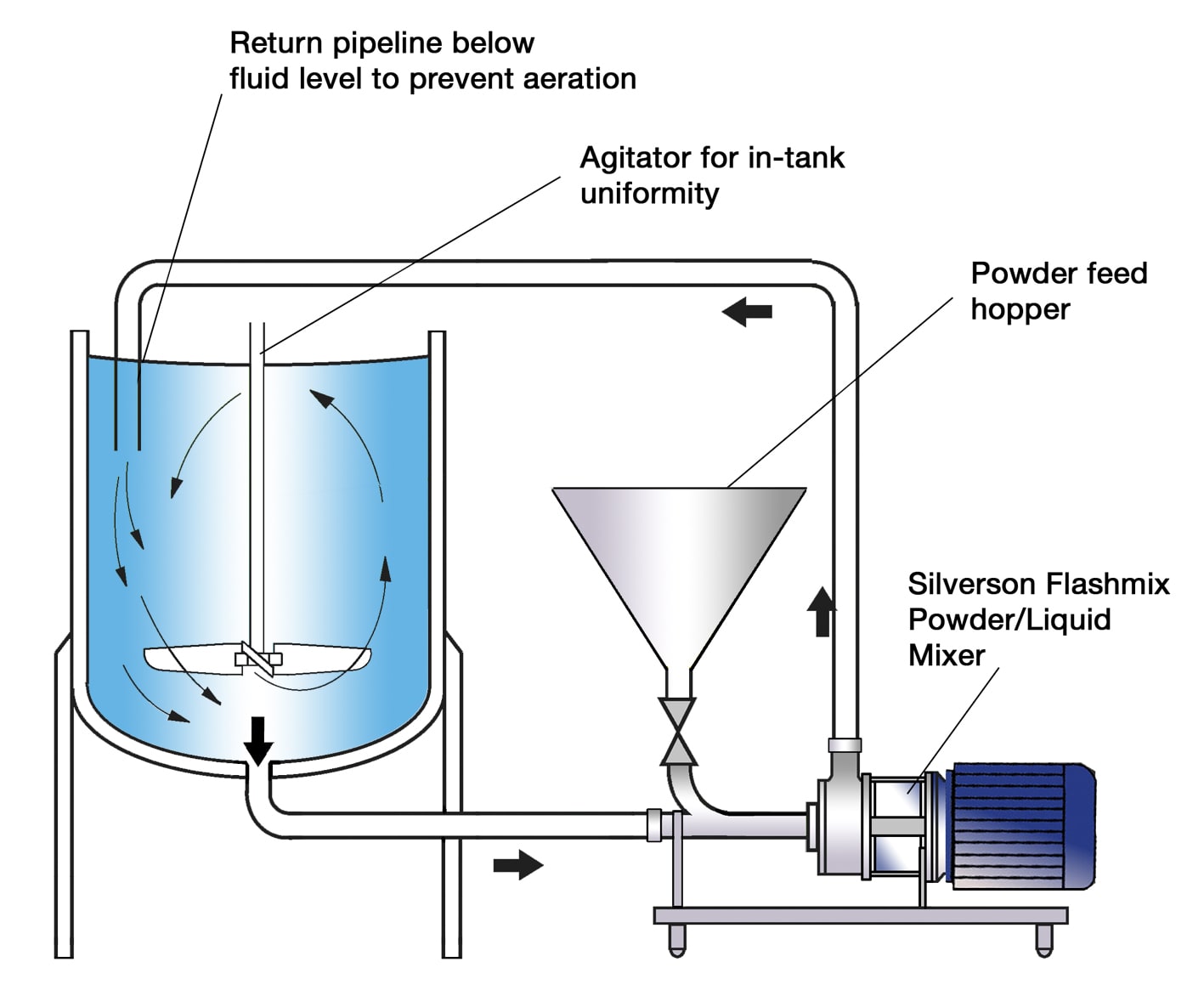Manufacturing Tomato Ketchup
Tomato ketchup is a condiment made by mixing concentrated tomato paste with water, sugar, vinegar, salt and seasonings. The tomato paste is typically manufactured using the “Hot Break” method. With this method, pulped tomatoes are heated to 200˚F (90˚C). This preserves the pectin that is found naturally in tomatoes, but some of the aroma and color are lost. Premium quality ketchup with a high solids content derive their viscosity from a combination of water retention of the fibrous strands in the paste and the gelling effect of the pectin, which is released via high-pressure homogenization. Lower solids content ketchup may also contain starch-based thickeners or gums.
The Process
The recipe, viscosity and solids content of ketchups vary widely. Typically tomato paste is blended with water and the other ingredients and the manufacturing process continues in one of two ways:
- When utilizing the pectin present in the paste as a thickening agent, fibrous strands in the tomatoes must be fibrillated (frayed) to raise capacity for water retention, which increases viscosity.
- Once mixed, the product is passed through a high-pressure homogenizer to obtain the required consistency.
- This method can also be used to increase yield as a thicker product can be achieved with a lower solids content.
- With the second processing method high-pressure homogenization is not used and thickening agents such as xanthan gum, pectin or starch (including modified starches) are used to obtain the required viscosity in the finished ketchup.
- With either method mixing apparatus must be capable of dispersing powdered ingredients into water to form an agglomerate-free product.
The Problem
A number of problems can be encountered when using conventional agitators:
- Long mixing times are required to dilute tomato paste into water, as agitators cannot easily blend liquids of widely differing viscosity.
- Additives designed to thicken the product tend to form agglomerates which agitators cannot easily break down.
- Partially hydrated ingredients can build up on the vessel wall and parts of the mixer.
- Long mixing times are required to achieve complete dispersion.
- A uniform pre-mix is required by the homogenizer. This is not easily achieved using agitators.
- Homogenization and other handling can dull the finish of ketchup.
The Solution
A Silverson high shear mixer can solve these problems and eliminate the need for additional processes such as pre-dispersion of the starches or thickeners and in some cases homogenization. Where a homogenizer is used, the high shear mixing action will improve pre-mix quality and consistency. Operation is as follows:
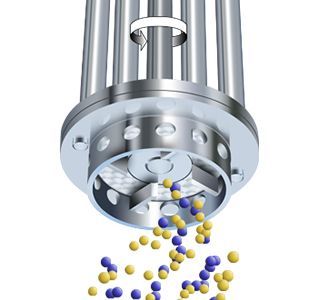
Stage 1
The vessel is charged with water and the Silverson mixer is started. The powdered ingredients are then added. The high-speed rotation of the Silverson mixer creates a powerful suction which draws the liquid and powders into the workhead. The materials are subjected to intense shear within the workhead.
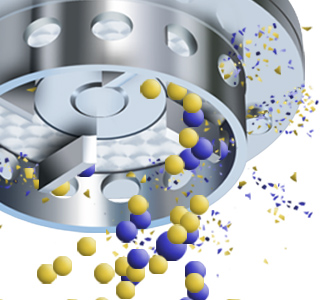
Stage 2
Agglomerates are broken down between the ends of the rotor blades and the stator wall. The product is forced out through the stator and returned to the mix. Fresh materials are simultaneously drawn into the workhead, maintaining the mixing cycle. The circulatory mixing pattern ensures that hydration of the thickening agents is rapidly completed.
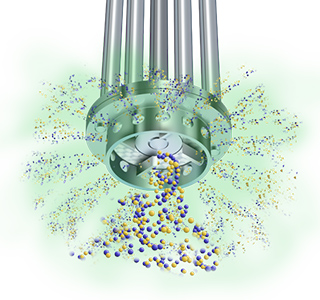
Stage 3
The tomato paste is then added and dispersed in the same manner. A homogenous mixture is rapidly obtained.
-
Stage 1

Stage 1
The vessel is charged with water and the Silverson mixer is started. The powdered ingredients are then added. The high-speed rotation of the Silverson mixer creates a powerful suction which draws the liquid and powders into the workhead. The materials are subjected to intense shear within the workhead.
-
Stage 2

Stage 2
Agglomerates are broken down between the ends of the rotor blades and the stator wall. The product is forced out through the stator and returned to the mix. Fresh materials are simultaneously drawn into the workhead, maintaining the mixing cycle. The circulatory mixing pattern ensures that hydration of the thickening agents is rapidly completed.
-
Stage 3

Stage 3
The tomato paste is then added and dispersed in the same manner. A homogenous mixture is rapidly obtained.
The Advantages
- Dramatically reduced processing times.
- Rapid dispersion of thickeners and stabilizers.
- Improved yield of ingredients.
- Smoother texture and improved product consistency.
- Improved color.
- Ketchup with low solids content do not require homogenization and the entire process can be completed using the Silverson mixer.
- The product fed to the homogenizer is uniform and of a low particle size, allowing faster processing through the homogenizer and fewer passes required.
- A Silverson mixer can be used as a “polishing step” after homogenization to improve texture, viscosity and sheen of ketchup.
The type of product, batch size and viscosity of the end product determine which mixer from the Silverson product line is most suitable:
High Shear Batch Mixers
- Suitable for batches of up to 150 US gallons
- Larger batches can be processed with additional in-tank agitation
- Easily cleaned
- Can be either vessel mounted or fitted to a mobile hydraulic floor stand
High Shear In-Line Mixers
- Ideal for larger batches
- Aeration free
- Easily retrofitted to existing plant
- Self-pumping
- Can be used to discharge vessel
- Designed to be Cleaned-In-Place
- Multistage units available for greater degree of shear resulting in finer particle size and faster processing times
- Tomato paste dilution can be carried out on a continuous basis as shown
- High Viscosity models available
Silverson Flashmix
- Ideal for larger sauce batches
- Capable of rapidly incorporating starch, sugar, salt and spices
- Minimized aeration
- Minimized cleaning requirements
- Suitable for higher viscosity mixes
- Suitable for operation at higher temperatures
- Minimum operator input required
